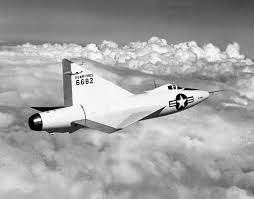✈️ Convair XF-92A — Review
🧩 Overview
The Convair XF-92A was the United States’ first delta-wing jet aircraft, developed in the late 1940s. While it never saw combat or mass production, it served as a crucial experimental platform that directly influenced the design of future U.S. interceptors and bombers — especially the F-102, F-106, and B-58.
It was an experiment that flew during a period of radical innovation, helping the U.S. Air Force understand high-speed aerodynamics, delta-wing handling, and transonic stability.
⚙️ Specifications
-
First flight: September 18, 1948
-
Status: Experimental, only one built
-
Crew: 1
-
Length: 42 ft (12.8 m)
-
Wingspan: 31 ft (9.4 m)
-
Height: 15 ft (4.6 m)
-
Max speed: ~Mach 0.95 (~620 mph / 998 km/h)
-
Service ceiling: 47,000 ft (14,300 m)
-
Powerplant: 1 × Allison J33-A-21 turbojet with afterburner
-
Thrust: ~6,250 lbf (27.8 kN) (afterburner)
🛠 Design Highlights
-
Delta Wing: Inspired by captured German research and designs like the Lippisch DM-1
-
No horizontal stabilizers: The delta wing provided both lift and pitch control
-
Rugged nose intake: Classic early-jet look, housing the single engine
-
Simple tricycle landing gear: For better testing control and ground handling
-
Aluminum structure: Sturdy enough for repeated test flights at high speeds
🧪 Role & Purpose
The XF-92A wasn’t designed to go into service — it was a technology demonstrator. Its mission:
-
Test the handling of delta wings at transonic speeds
-
Gather data on supersonic airflow, lift, and drag
-
Serve as a stepping stone toward next-gen interceptors like the F-102 Delta Dagger
Legendary test pilot Chuck Yeager flew the XF-92A and described its performance as difficult — particularly its slow acceleration and poor low-speed handling — but still a milestone in U.S. jet development.
🧱 Strengths
-
Pioneered delta-wing design in the U.S.
-
Provided critical flight data that shaped Cold War aircraft
-
Successfully tested stability and control at high subsonic speeds
-
Served as a stepping stone to faster, more advanced jets
⚠️ Weaknesses
-
Underpowered: The J33 engine couldn’t push it past Mach 1
-
High landing speed and poor low-speed control
-
Too experimental and limited for operational use
-
Only one was built — it was never weaponized
🏁 Final Verdict
| Category | Rating (★ out of 5) |
|---|---|
| Innovation | ★★★★★ |
| Practicality | ★★☆☆☆ |
| Handling | ★★☆☆☆ |
| Legacy & Influence | ★★★★★ |
| Cool Factor | ★★★★☆ |
🔚 Final Thoughts
The Convair XF-92A never went to war and never hit Mach 1 — but it’s one of those unsung heroes of American aviation. Without it, the U.S. may never have developed its iconic delta-wing fighters and bombers of the Cold War era.
It was an aerodynamic testbed, not a battlefield weapon — but its DNA runs through some of the most important jets that followed.

Comments are closed